‘Blindingly gorgeous’ spring birds will migrate to KY soon. Your guide to spotting them
As many as 3 million birds have flown through Lexington in just one spring day, and some stand out as fan-favorites.
The Central Kentucky Audubon Society and the Kentucky Ornithological Society provide resources for Fayette County birders looking to learn more.
Here’s some colorful friends to look out for in the skies this spring, plus tips on how to have the best bird-watching experience possible.
How to birdwatch
Ronan O’Carra, board member of CKAS and editor of the KOS’ journal The Kentucky Warbler, told the Herald-Leader it can be helpful for beginner birders to go out with a group.
“All the birders are willing to help people starting out. And they enjoy doing that because they love to see people having interest in birds,” O’Carra said.
Every second Friday, weather-permitting, birders gather at Raven Run Nature Sanctuary for group walks. The events are free to attend, but registration is required.
In addition to group bird-watching excursions, apps such as Merlin can help beginning birders get their bearings. Aspiring birders can take photos of the species they encounter and record their sounds for help identifying them.
“It’s a great aid for people starting out to have these apps that can help identify,” O’Carra said. “But the best way to learn is to go out with a group. All the groups are happy to have beginner birders.”
About 20 pairs of binoculars are available to borrow for walks at Raven Run, and O’Carra recommends trying some out before deciding to make a big purchase. Binoculars on the lowest price end might not be worth it, O’Carra said, but he’s bought a pair for roughly $200 that have lasted him 10 years.
Birdwatchers from across US flock to Central Kentucky after rare species spotted
A good bird identification book can be helpful, along with a free eBird account. Keeping track of your sightings can allow you to relive your best birding days, as well as the less successful ones.
“That’s the thing with birding, you either see a lot or you don’t … but the fact that you’re getting out is amazing,” O’Carra said.
On May 9, 2022, O’Carra said 45 million birds reportedly crossed Kentucky, including 3 million flying over Lexington-Fayette. More than 280,000 birds were reported over Lexington around 1:30 a.m. that day.
Can’t-miss spring birds in Kentucky
Spring migration season can be an exciting time to watch for birds — so much so O’Carra said he keeps his windows open at night so he doesn’t miss flight calls.
Here are some of the springtime birds to add to your list this year:
Hooded warbler
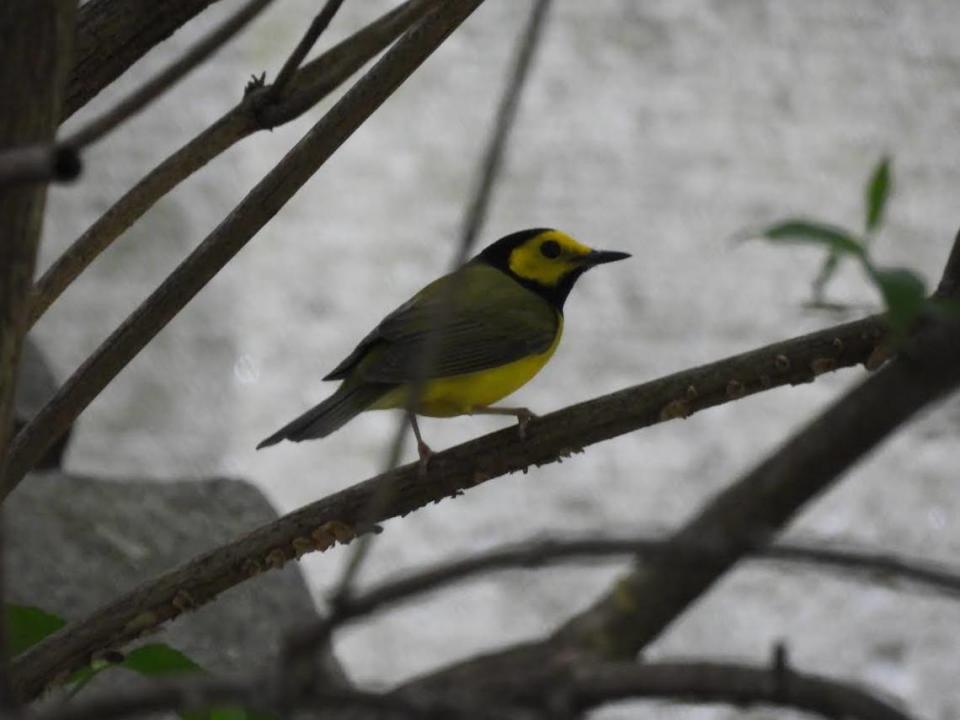
The hooded warbler boasts bright yellow and olive coloring, and All About Birds says they are “fairly heavy-bodied and thick-necked,” though their bodies are small. A hooded warbler weighs about 0.3 to 0.4 ounces on average, with a 6.9-inch wingspan.
You may find hooded warblers in forests with dense understories, and they eat insects.
All About Birds reports the species’ conservation status is of the “least concern,” but the National Audubon Society says they are considered vulnerable because they’re often parasitized by cowbirds.
Blackburnian warbler
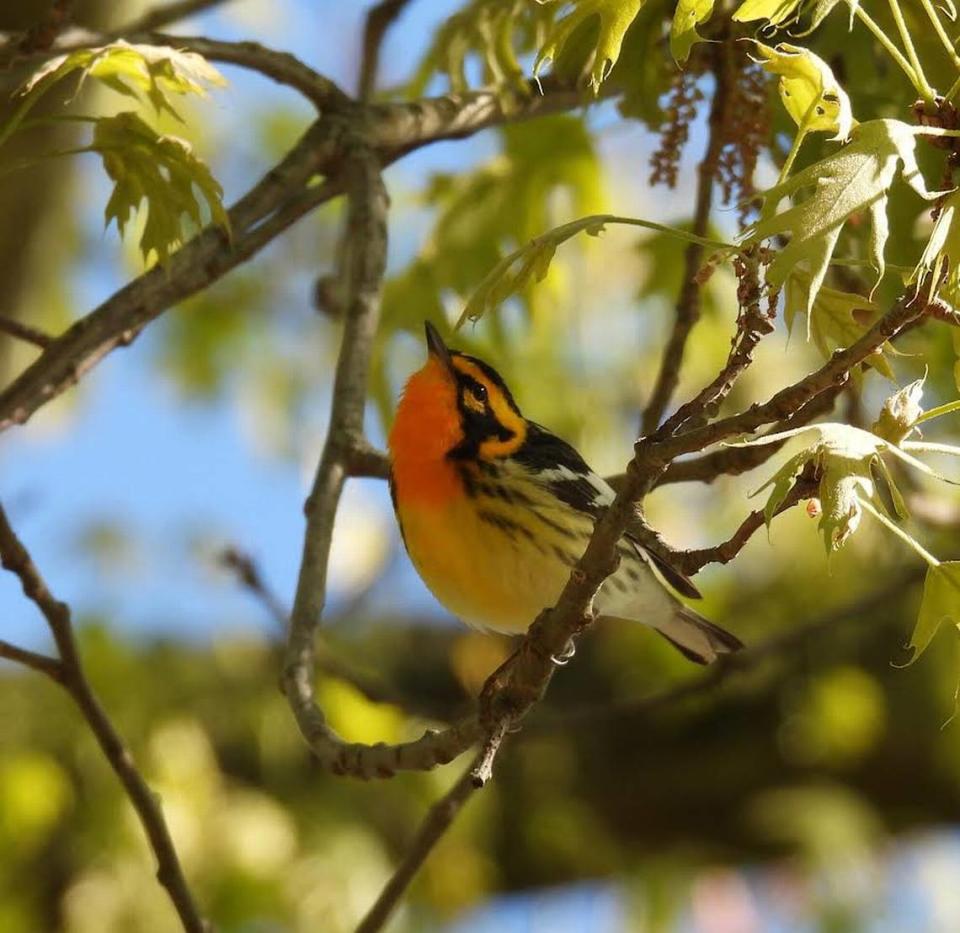
The adult male blackburnian warbler has a “brilliant orange” throat and a long body. Females and immature males have lighter, more yellow coloring, according to All About Birds.
The species is often found in trees, and the All About Birds website recommends birdwatchers to put out baths or water drippers for a better chance at seeing any visiting blackburnian warblers.
Their population is currently estimated at 10 million, the American Bird Conservancy reports, and is increasing. Blackburnian warblers typically reach the southern U.S. by March or early April.
Scarlet tanager
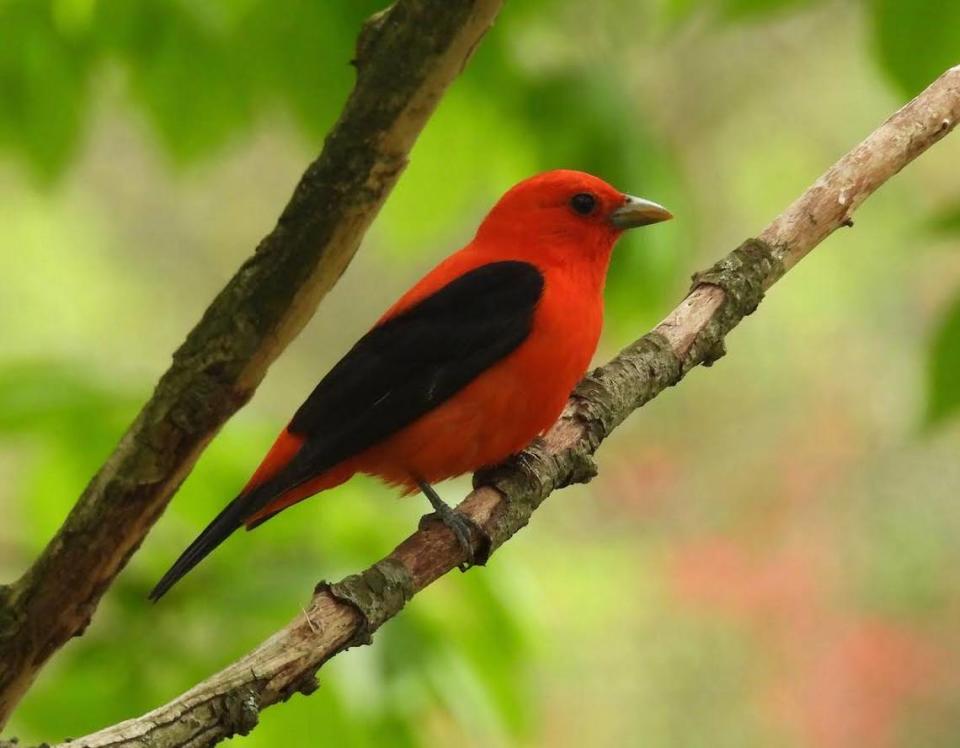
The scarlet tanager breeds in Kentucky and nearby states, and the males boast an “unmistakable, brilliant red” body. They eat insects, as well as fruit, and you might find them by your blackberry, raspberry or strawberry plants.
Female and non-breeding male scarlet tanagers have yellowish bodies with dark wings and tails. The species’ average weight is 0.8 to 1.3 ounces, landing them between the sparrow and robin for size. The males are “blindingly gorgeous,” All About Birds says.
Nests may be 50 feet tall or higher, and despite their bright coloring, the scarlet tanager can be difficult to spot. The species’ peak migration period to the U.S. is in early to mid-April, according to Bird Fact.
American redstart
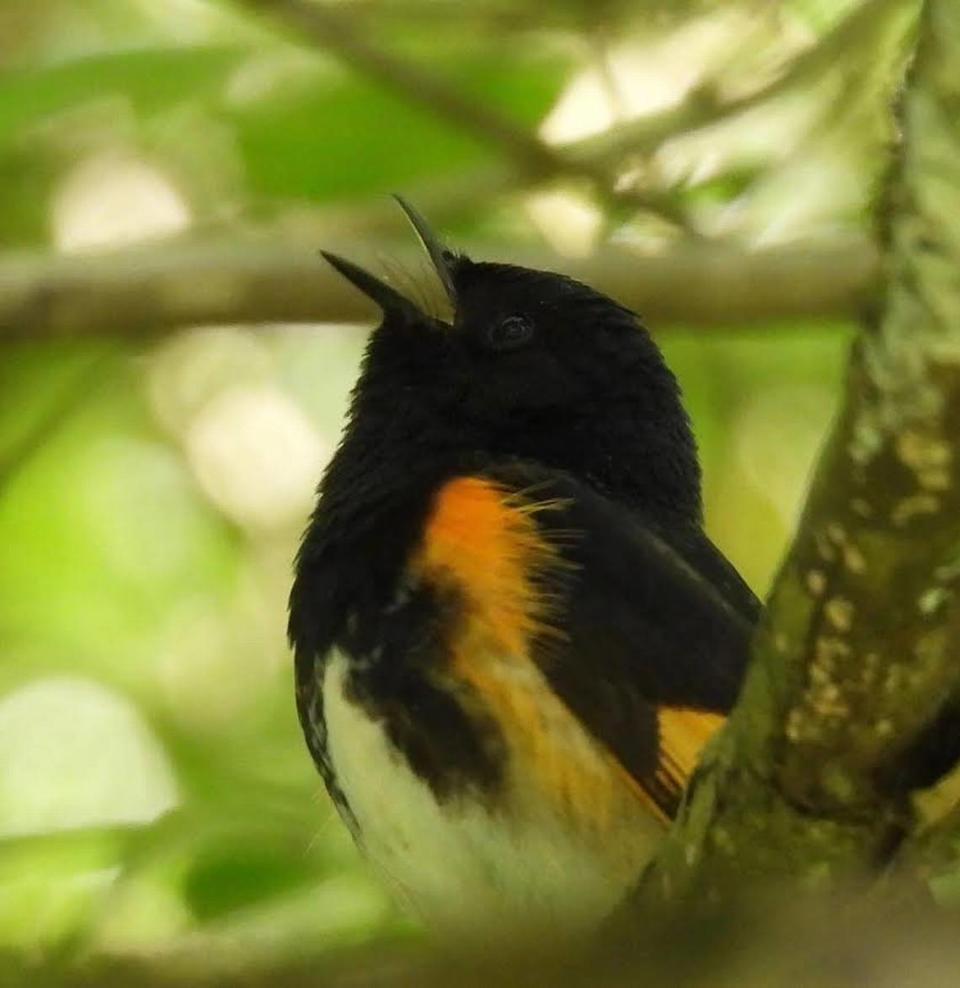
Migrating American redstarts can be found in wooded habitats, according to Ebird, and although their numbers are strong, populations are declining.
The species’ song varies, and is sometimes mistaken for that of a yellow warbler or black-and-white warbler.
To try to attract American redstarts to your yard, you could plant magnolia, serviceberry and native trees that produce small berries, the American Bird Conservancy says.
Baltimore oriole
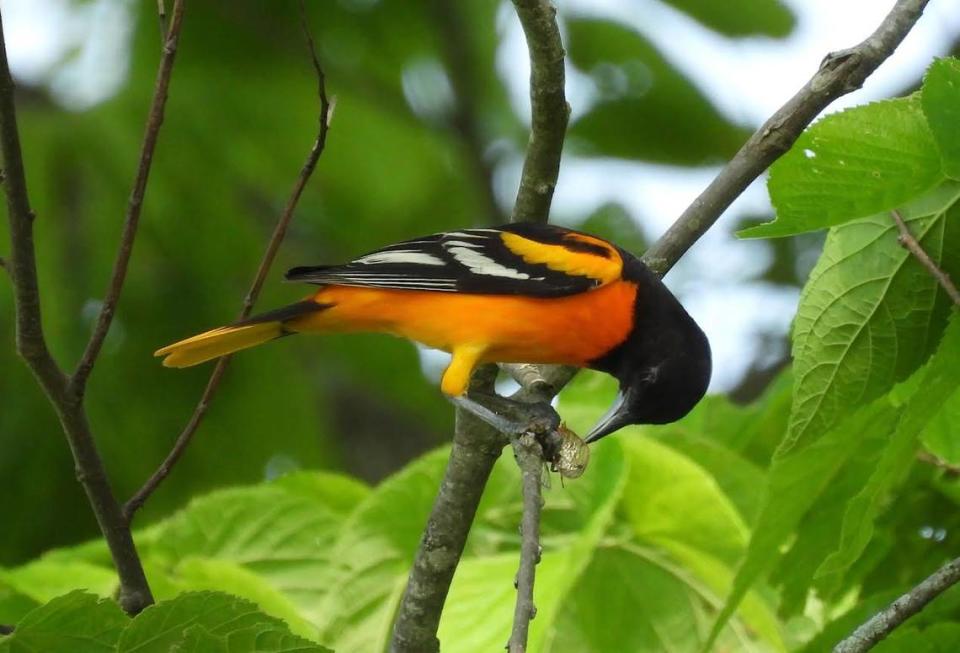
The Baltimore oriole is often found looking for insects in treetops. They also eat ripe fruit, and All About Birds recommends cutting oranges in half and hanging them from trees to invite the birds into your yard.
The species arrives in eastern and central North America from early April to late May.
The oldest Baltimore oriole on record lived to 12 years old, All About Birds reports. Their conservation status is considered stable.
Do you have a question about birds in Kentucky for our service journalism team? We’d certainly like to hear from you! Fill out our Know Your Kentucky form or email ask@herald-leader.com.

